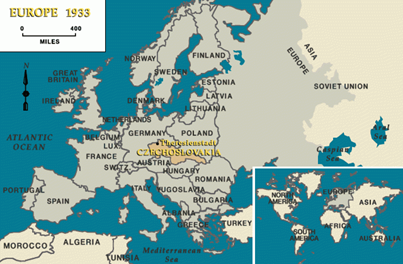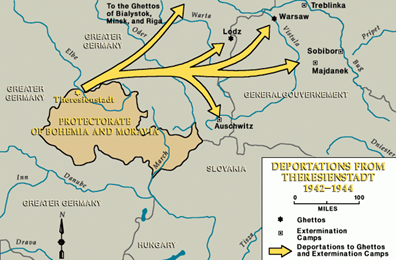
Theresienstadt: The Czech "Spa Town" for the Jews
On November 24, 1941, the Theresienstadt transit camp and ghetto was established in Czechoslovakia. It was originally a military base, established by Emperor Joseph II of Austria in 1784.

After the Germans took over parts of Czechoslovakia in 1939, they took over Theresienstadt and used it for their own military in what they now called the Protectorate of Bohemia and Moravia. By October 1941, the Germans decided to use Theresienstadt as a transit camp-ghetto. It would be used as a transit station for Czech Jews, on their way to German occupied Poland, Belorussia and the Baltics.
On November 19, the leaders of the Jewish Religious Community in Prague were commanded to send 1000 Jewish workers to the ghetto-camp to convert it from a military base to a “town” for Jews. The workers reported to the work site just a week later. Those who would be moved to the new site would be Jewish World War I veterans, elderly Jews and prominent Jews in the arts. Nazi propaganda described Theresienstadt as a “spa town” and retirement community. In reality, it was a temporary location for Jews who would eventually be deported to their deaths.

Between November 1941, and April 1945, almost 74,000 Jews from the Protectorate of Bohemia and Moravia were sent to Theresienstadt. By 1942, the Germans were deporting Jews from other locations into Theresienstadt. The crowded conditions, diseases and scant food led to the deaths of many residents. By 1944, the majority of residents, nearly 82%, were deported to killing centers, killing sites, and forced-labor camps. Of this number, approximately 3000 survived the Holocaust.